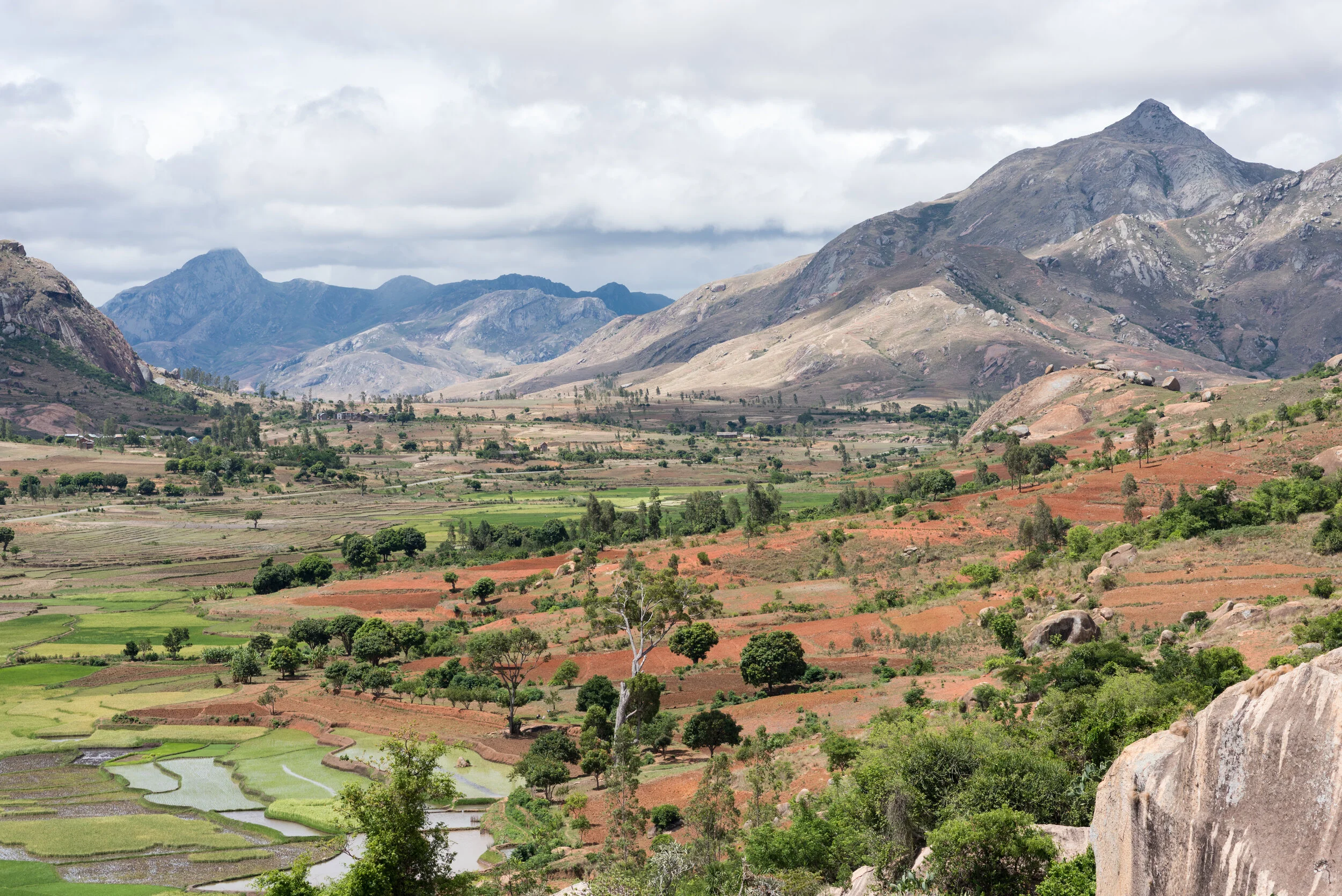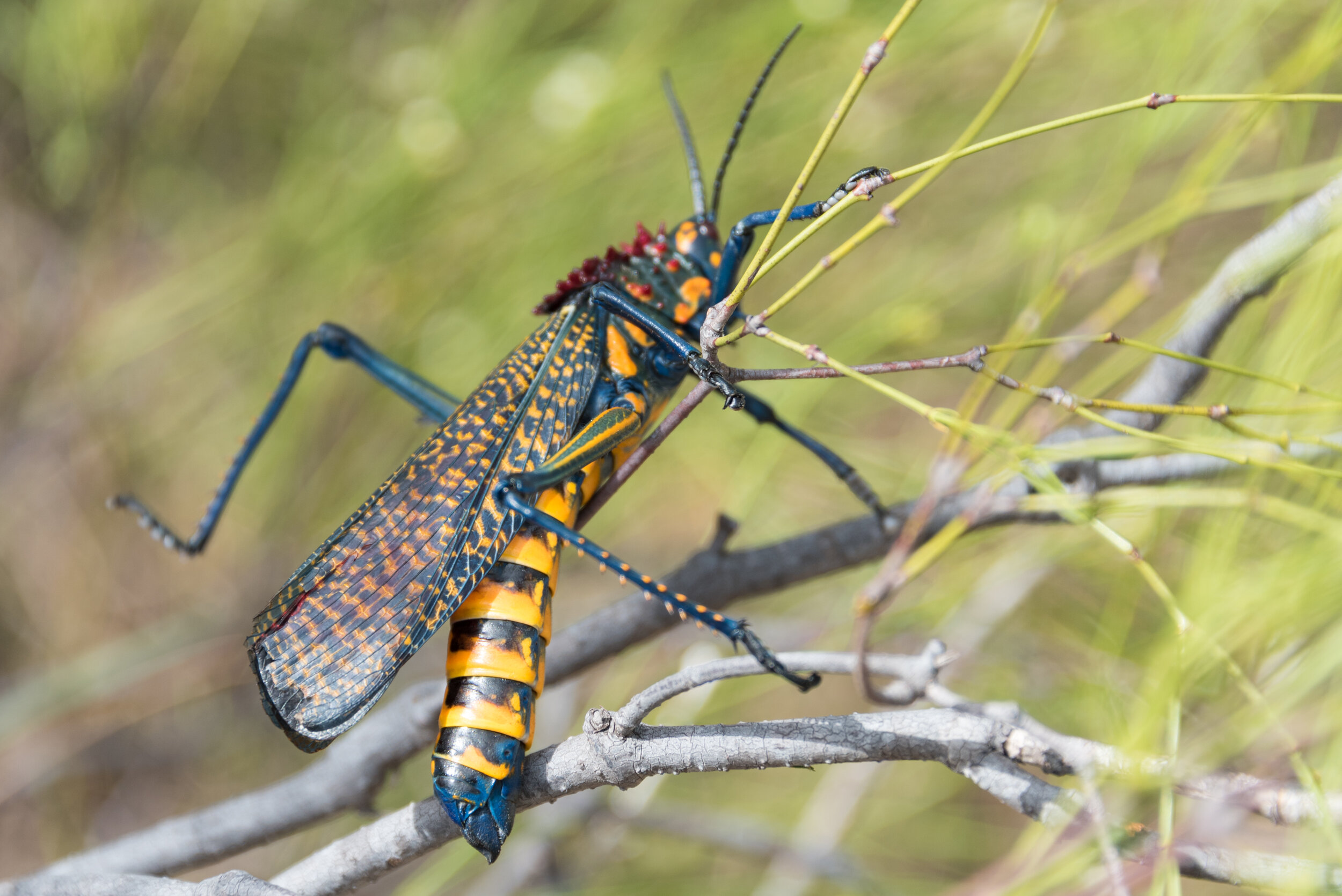Three quarters of the way through the 14-hour ride back to Tana, we decided to hop off the van in Antisirabe (the most pronounceable of the Malagasy cities), where rickshaws reign over motorbikes, where, depending on your budget, transport consists of a bicycle rickshaw or the good old-fashioned human powered. I felt bad for some of the guys running up the hills with not the lightest of passengers, some barefoot, but the dollar (or ariary) must be chased. From Antisirabe, our plan was to head south, in hopes of finding the Madagascar we imagined, one filled with rainforests, lemurs, chameleons, and other strange creatures. After a day of souvenir shopping that, refreshingly, did not include beads and animal carvings like pretty much every other souvenir shop in all of Africa, we arranged for transport to a few of the national parks that dot the RN7, the main north-south artery through the country.
First stop: Rainforest
Ranomafana National Park sits in the southeast-ish center of Madagascar, a protected area of rainforest that gives a glimpse of just how much forest has been cleared from the country. Tree-less, terrace-filled hills went on seemingly forever throughout the drive, save for a few small forests here and there. Ranomafana, however, was a pocket of dense rainforest, teeming with life from the second the park begins. We arrived in the twilight hours, the sound of creatures almost deafening as we stepped out of the vehicle. Making our way to our lodging, it was clear that a village still existed inside the park, with the protection of the forest no doubt a challenge in terms of resource management. Our lodging for the evening was thankfully protected from the slew of creatures outside: geckos, spiders big and small, cackling who-knows-what, and a variety of creepy crawlers. The next morning, we made our way out into the forest in search of the creature unique to Madagascar, the lemur. Ranomafana was created in order to protect the golden bamboo lemur, a rare species found only there. We set off into the forest with our guide, while his spotter disappeared ahead. 15 minutes later, we found ourselves underneath a few of the funny creatures, golden in color, tiny heads and human-like hands/feet. Another species was nearby, and we watched a family with child swing through the branches and jump from tree to tree, noticing us, but not paying too much mind. While there was some semblance of a main trail, tracking the lemurs required some roundabout meandering through the jungle, and it didn’t take long for me to become completely turned around.
Much different than the norm in the United States, most all trekking of any sort in a National Park in Africa requires a guide. Whether for protection from the elements, the people you may encounter, or simply because the trails are not well marked (or perhaps a combination of all 3), you really cannot get complete solitude in nature. At first, this tended to frustrate me, however, walking around a place like Ranomafana, as well as other parks we’ve made our way through on this trip, would be nearly impossible without the help of a guide. Though the accessibility and solitude is something I value in the US, perhaps our number of National Park deaths would be reduced if guides were required!
Further through the jungle, we encountered yet another species of lemur, this one black and white, and quite larger than the others. The size of lemurs ranges from the tiny Mouse lemur at just one ounce, to the Indri at up to 20 pounds. In my attempts to photograph the new lemur, I happened to crouch down next to, thankfully unbeknownst to me, a coiled Boa having a mid-morning nap. Of course, everyone laughed it off like the snake would never hurt me, but I knew better. More walking, more creatures, from tiny chameleons to bright green geckos hanging off banana trees. It doesn’t get more rainforest than that!
Following our morning walk, we were southbound again, away from the rainforest and into the mountainous regions, stopping first in a small, protected area that housed the King (Julien) of all lemurs, the ring-tail. If the Baobab is the iconic tree, the ring-tail must be the iconic animal. Long tails, black and white spirals throughout, stick straight up and arch like a shepherd’s staff, elegantly floating in the air while the white faces look like they’ve applied a bit too much black eyeshadow and lipstick. Fascinating creatures, that seemed to enjoy their human company, even with babies in tow. There are certain animals I’ve encountered that elicit elation when in their presence. Dolphins, elephants, penguins, and now, lemurs. They seem to hop around and play with no worry in the world, and I couldn’t help but want to join them. By the end, we were able to recognize the various calls they use with each other, ranging from Help, to Stranger-Danger, to Love. The hike through the area brought us to some stunning views across the countryside, filled with peaks, rolling hills, and rice paddies.
Further south, the mountains turned to endless open roads, dotted with Zebu (Malagasy cows) and the occasional cloud. Arriving at Isalo National Park, we arranged for an overnight trek through the park, where we found ourselves in landscapes unlike any we’d seen thus far. Rocky outcroppings, funky trees and plants, canyons, and oasis-like swimming holes and waterfalls, a perfect respite from the desert heat. The scenery was altogether different than we’d expected, but still managed to be uniquely Malagasy. We encountered 6-inch bugs that were indecipherable from the maze of twigs in which they were hiding (stick bugs), bulbous plants that seemingly floated on the sides of rocks (Elephant’s foot), technicolor grasshoppers, slow motion chameleons, and a new lemur…the dancing kind. Our new friend hung out around camp, swinging through the trees and jumping across the ground on two feet.
After a slightly too warm night of sleep, we headed out of the park and back on the road for the long journey north. With the sights checked off, it was time to enjoy the more immediate sights and sounds of the roadside. Loaded up in our Isuzu Trooper-ish, gold-rimmed, tinted-windowed ride, driver and guide in front, us in the back, the stereo blasted a mix of classic rock, old rap, and some local flavor, as we navigated the two-lane, unmarked road that was the equivalent of Interstate 80 of I-5 back home. We stopped at a slew of official and unofficial roadside stands for chicken drumsticks, Tapia fruit, mini plums, peanuts, and lychee honey. Lychees seemed to be everywhere in the country, the spiky balls served in bunches as finger foods, ready to crack open for the juicy fruit inside. I always enjoy finding situations in which foods or sights originally thought as exotic or specialties become common fare or normal, every day occurrences. It’s not often you find yourself hanging out with lemurs and on the same day buying handfuls of fresh lychees with the change in your pocket, but it’s a life many have grown accustomed to on the island.
Our last stop on the road trip happened to be an unanticipated one, as the reputation of Madagascar’s roads caught up with us. In an attempt to pass, an oncoming car swerved into our lane, side-swiping our vehicle in the process. Aside from some shattered glass and the shock of it all, we walked away unscathed, thankfully. A slight blip in an otherwise thoroughly enjoyable trip, the incident has seemed to pass away from my memories, replaced by the sights and sounds of the seemingly never-ending, twisting roads: rice farmers and red dirt hills, chameleons and cows, rainforests and rickshaws, and, of course, lemurs and lychees.




















